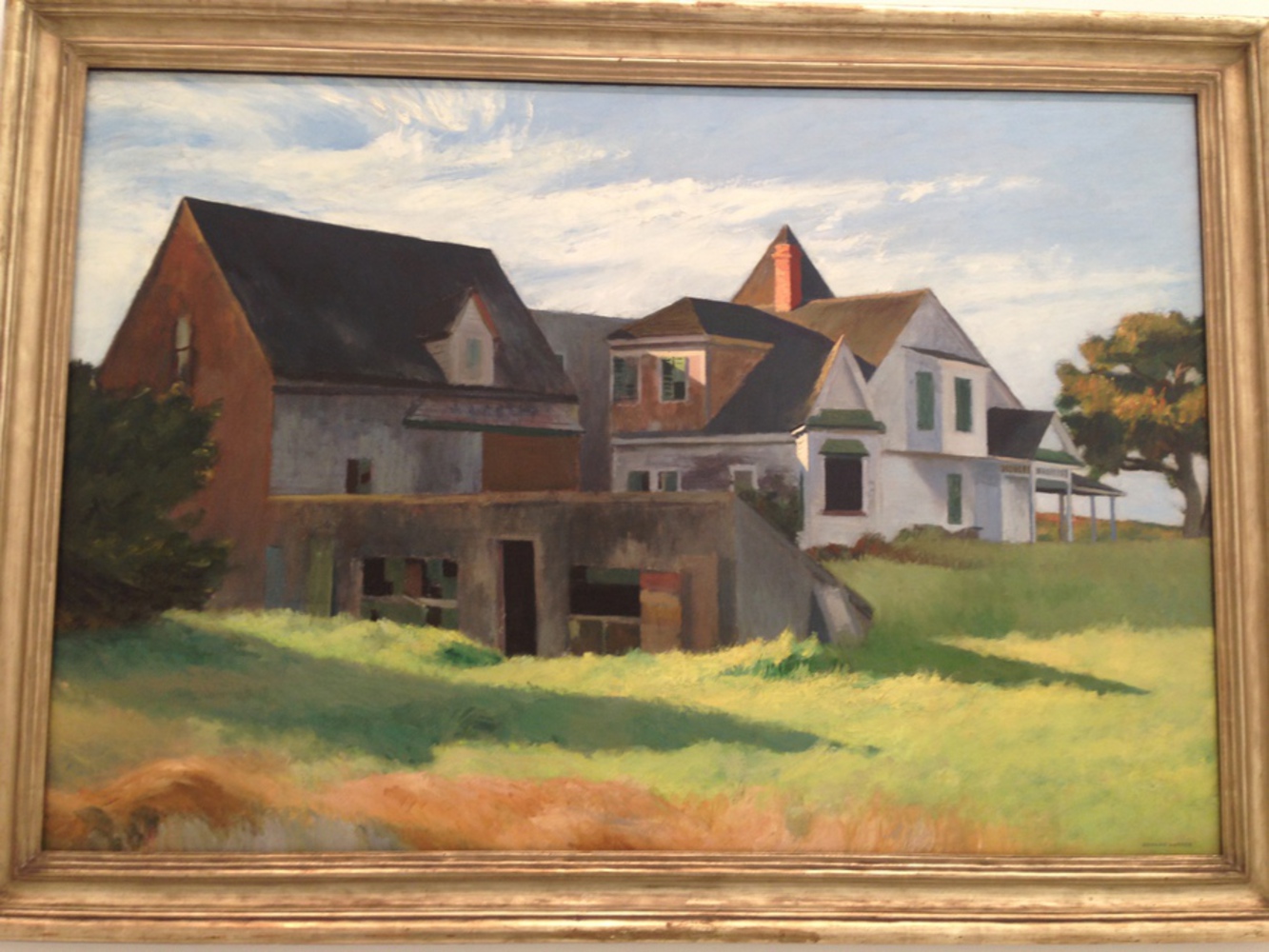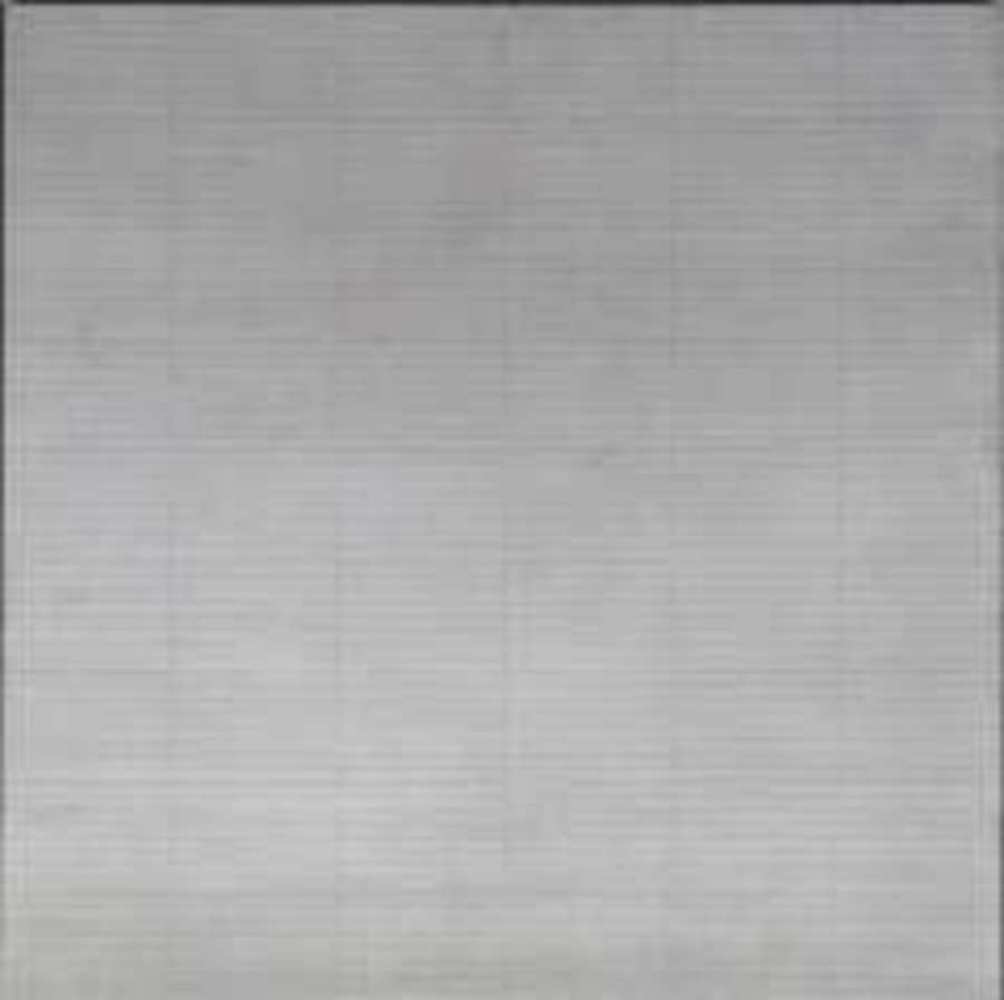The paintings that I chose to hone in on were Cape Cod Afternoon (a more realistic depiction) by Edward Hopper, and Untitled No. 9 by Agnes Martin (the more abstract work of art), both located in the Carnegie Museum of Art. Though these are two very different paintings that generated very different reactions from me, I still understood certain underlying themes and implications that connected the two.
Outcome
What drew me in to the Edward Hopper painting, Cape Cod Afternoon, was the light and the shadows cast by the home. The moment seemed very specific, like Hopper decided to freeze the moment in a very exact time of day. It is so particular, that it places you in the scene, looking off on the house. The perspective that he chose is not one that is head on- we are looking off from an angled side of the house. It makes the house look a bit eerie and lonely, not one that I would actually want to approach. After looking at this painting for a while, I began to nice the difference in the far half of the house from the close half of the house. The closer half is darker, it seems to be forgotten and falling apart. It is empty and dark on the inside, and feels very remote form the viewer.
Thoughts on Edward Hopper, Post context research:
It was interesting to read about whom Edward Hopper was most influenced by: Edward Degas and Edourd Manet. I would not have put these artists together myself, but further reading said that Hopper was influenced by their depictions of urban life during their time (19th century). Hopper, too, liked to paint modern urban and suburban life.
It is said that his work of art, House by the Railroad, is most representative of his style: "clearly outlined forms in strongly defined lighting, a cropped composition with an almost "cinematic" viewpoint, and a mood of eerie stillness." You can easily see the similarities in House by the Railroad and the work that I viewed, Cape Cod Afternoon. I think that a lot of this I had noticed, without pinpointed it as especially Hopper-esque. I had recognized the importance of the light in his work to create a specific time and therefore a specific mood. The house does seem very lonely and desolate, definitely not warm and welcoming.
Realizing that these are common themes in Hopper's work and looking at all of his works together, helps explain various aspects of the painting. For example, the emptiness of the house and the dark windows that show that no one is home is common in his paintings. If he does paint people, they are alone or isolated- for example a woman walking alone, or a semi-deserted movie theatre.
His paintings work together like a movie to evoke the loneliness, albeit beauty, of modern urban times, even while standing in a crowded museum.
Agnes Martin’s painting is also very specific, but in a different way that Hopper's. At first glance, the pencil-drawn lines that fill the canvas seemed simplistic. They seemed to be perfect, almost like they couldn’t have been human made. They also looked like they could have been created quickly, or at least that not all of the areas were thought through. But after really looking at the painting for a longer time, I noticed that not all of the white on the canvas was the same. I also noticed that the pencil lines looked straight, but they really weren’t completely straight. The work is trying to look perfect, but it is not perfect. It becomes a slower, more layered experienced- and there are so many details involved. I think this painting is about imperfection, and trying to be perfect while also being human. It is also about the unfolding of time, and makes you think of a period of time going by, continual and infinite. This serene, infinite experience was definitely contrasted with Hopper’s frozen and eerie experience of a time.
Thoughts on Agnes Martin, Post context research:
Something that I learned that particularly interested me was that Agnes Martin was very interested in eastern Asian and Zen Buddhist practices and codes of ethics. I think those ideas must definitely come into play in her muted color choices for all of her paintings. They allow a sense of calm and peacefulness that I had not felt, looking at the other paintings that had surrounded it. In an interview, she talks about having a vacant mind and doing exactly what the inspiration has her do, without letting anything block her from the inspiration. You can sense a clear vision when you look at her paintings, and I think that maybe that is why they are so peaceful. She was also very influenced by Rothko, and saw him as an artist who "reached zero so that nothing could stand in the way of truth".
I read that her lines that are present in a lot of her paintings were all drawn by hand, without a ruler. It is amazing that these lines are so close to perfection, and without looking too carefully one might see them as such. But in reality, there are subtle marks that show that a human hand drew each line individually.
Martin also talks a lot about happiness, and how happiness and joy are very important to her- she wants to paint happiness, not the desolation and loneliness of Hopper. It makes me wonder whether these were the paintings of someone who was happy, or if they are those of someone who wants to be happy and who is making a painting to accept her imperfections. She said that she didn't believe that Rothko actually committed suicide, because she couldn't accept that someone who painted such emotional and truthful paintings as Rothko's could not be happy.
Her paintings are that much more expressive and honest after knowing more about where she was coming from, and where her mind was while painting them. These paintings are as peaceful as a Zen Buddhist striving for perfection.
You can upload files of up to 20MB using this form.

